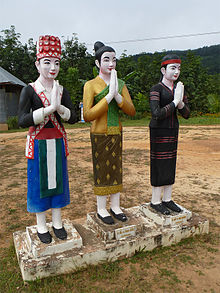Lao_Theung
The Lao Theung or Lao Thoeng (Lao: ລາວເທິງ pronounced [láːw tʰɤ́ːŋ]) is one of the traditional divisions of ethnic groups living in Laos (the others being the Lao Loum and the Lao Soung). It literally indicates the "midland Lao", and comprises a variety of different ethnic groups of mostly Austro-Asiatic origin. In 1993, the Lao Theung formed 24% of the country's population.
This article needs additional citations for verification. (February 2009) |
